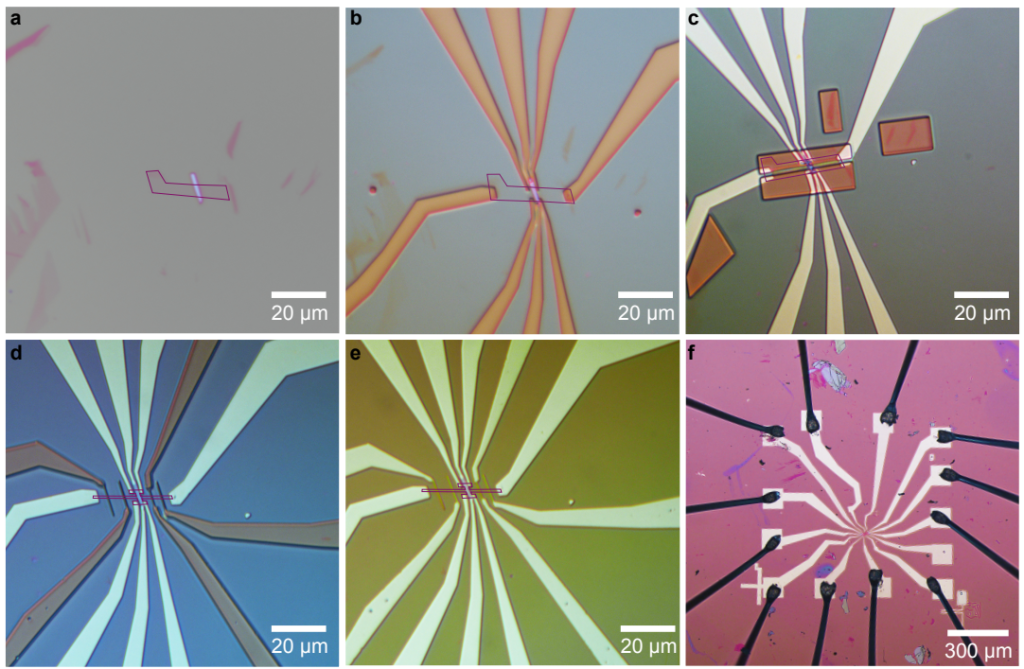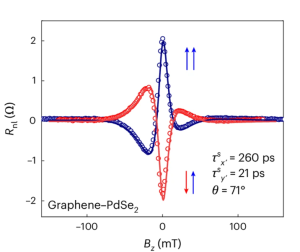Graphene is a material with extraordinary properties. It is a single atomic plane of graphite, forming a two-dimensional, atomic-scale, honey-comb lattice. The electronic properties of monolayer graphene strongly differ from those of two-dimensional metals and semiconductors, in part because of inherent electron-hole band structure symmetry and a particular density of states which vanishes at the Dirac point. Furthermore, the sublattice degeneracy and honeycomb symmetry lead to eigenstates that hold an additional quantum (Berry’s) phase, associated with the so-called pseudospin quantum degree of freedom. All of these electronic features are manifested through relativistic phenomena such as the Klein tunnelling effect, weak antilocalization or the anomalous quantum Hall effect. The possibility of using the pseudospin as a means to transport and store information has also been theoretically proposed. There, the role of the pseudospin is equivalent to that of the spin in spintronics, such as in the pseudospin analogue of the giant magnetoresistance in bilayer graphene.

Different steps of the sample preparation. From exfoliated flake, to van der Waals heterostructure and eletrical contacts for magnetotransport measurements.
In our group, we study the spin dynamics of carriers in graphene and their interaction with other degrees of freedom such as pseudospin. We are interested in understanding the spin relaxation mechanisms, including spin lifetime anisotropy, the spin Hall effect and proximity effects with other 2D materials, topological insulators, or with ferromagnetic insulators.
Proximity-induced Spin-Lifetime Anisotropy in Graphene
Hexagonal transition metal dichalcogenides induce valley Zeeman spin–orbit coupling in graphene, creating spin lifetime anisotropy between in-plane and out-of-plane spin orientations. However, in-plane spin lifetimes remain isotropic due to the inherent heterostructure’s three-fold symmetry. Here we demonstrate that pentagonal PdSe2, with its unique in-plane anisotropy, induces anisotropic gate-tunable spin–orbit coupling in graphene. This enables a tenfold modulation of spin lifetimes at room temperature, depending on the in-plane spin orientation. Moreover, the directional dependence of the spin lifetimes, along the three spatial directions, reveals a persistent in-plane spin texture component that governs the spin dynamics. These findings advance our understanding of spin physics in van der Waals heterostructures and pave the way for designing topological phases in graphene-based heterostructures in the strong spin–orbit coupling regime. They were published in Nature Materials.

The orientation of the spins at the PdSe2 location is modulated by Bz, resulting in asymmetric Rnl, from which τx, τy and θ can be determined. The asymmetry is absent in isotropic graphene.
The origin of θ remains an open question, requiring density functional theory studies in graphene–PdSe2 heterostructures. However, predicting θ as a function of twist angles is challenging. Even in simpler proximity systems, such as graphene coupled with 2H TMDCs, the rotation angle of the Rashba SOC spin texture away from tangential is highly sensitive to the heterostructure’s properties, with no discernible trend observed with a varying twist angle. Nonetheless, the observed spin lifetime anisotropy in graphene–PdSe2 highlights the versatility of proximity effects in vdW heterostructures, providing valuable insights into strategies for tailoring spin textures through the interplay of materials with distinct crystal symmetries. The detection of persistent spin textures in graphene–PdSe2, resembling those predicted for monolayer 1Td MoTe2 and 1Td WTe2, unveils promising avenues for advancing spin manipulation and exploring topologically non-trivial states driven by SOC. Furthermore, the tunability of spin relaxation anisotropy opens exciting prospects for the development of directionally controllable spin transport, which could have important implications for spintronic applications.

